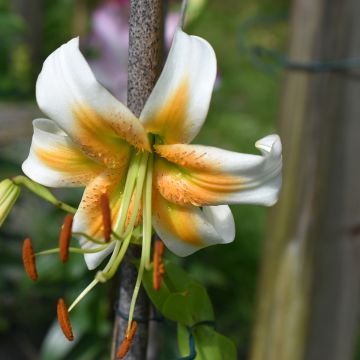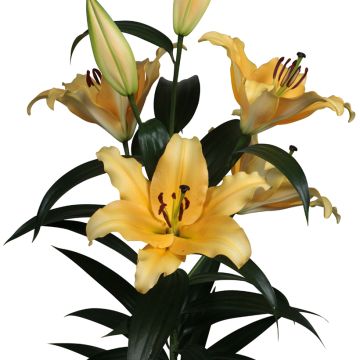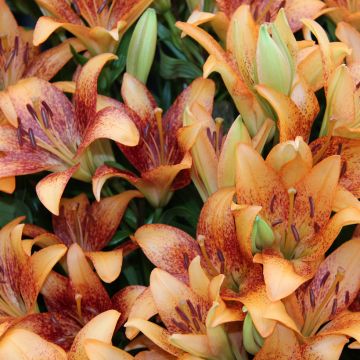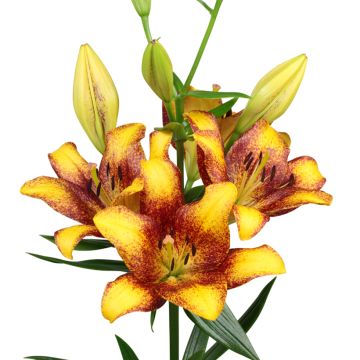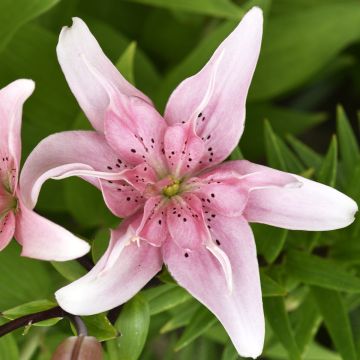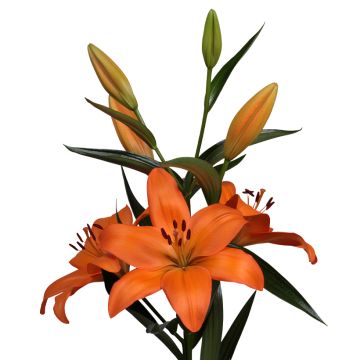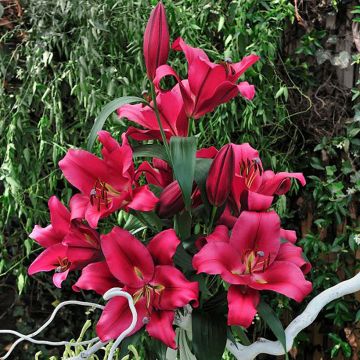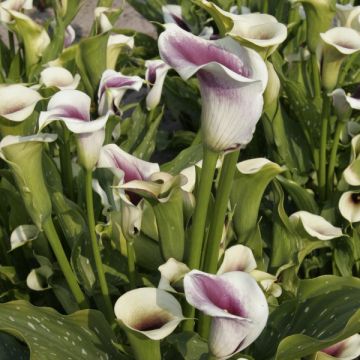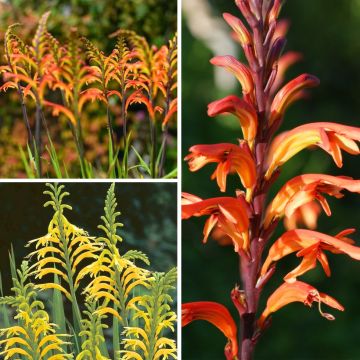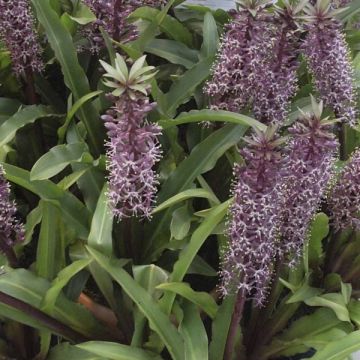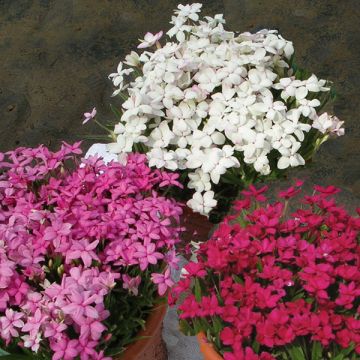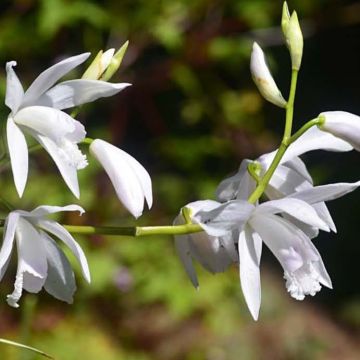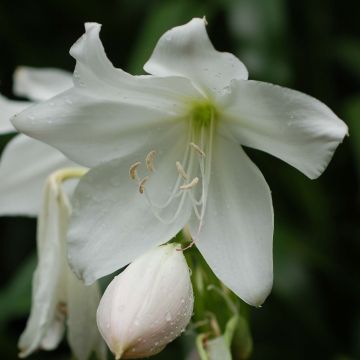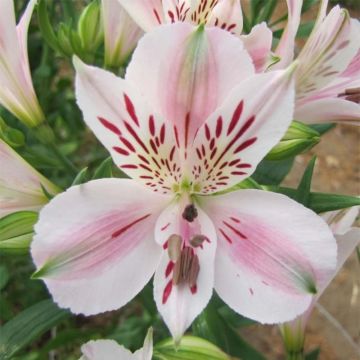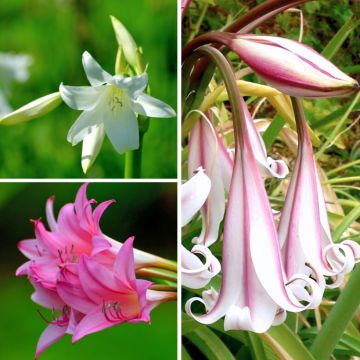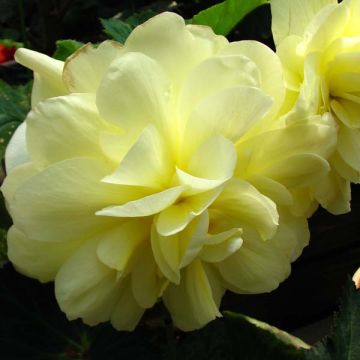Shipping country and language
Your country of residence may be:
Your country of residence is:
For a better user experience on our website, you can select:
Your shipping country:
-
Andorra
-
Austria
-
Belgium
-
Bulgaria
-
Canada
-
Chile
-
Croatia
-
Cyprus
-
Czechia
-
Denmark
-
Estonia
-
Finland
-
France
-
Germany
-
Greece
-
Hungary
-
Iceland
-
Ireland
-
Italy
-
Latvia
-
Lithuania
-
Luxembourg
-
Malta
-
Monaco
-
Netherlands
-
Poland
-
Portugal
-
Romania
-
Slovakia
-
Slovenia
-
Spain
-
Sweden
-
Switzerland
-
United Kingdom
We only deliver seed and bulb products to your country. If you add other products to your basket, they cannot be shipped.
Language:
-
French
-
German
-
Spanish
-
English
-
Italian
My Account
Hello
My wish lists
Log in / Register
Existing customer?
New customer?
Create an account to track your orders, access our customer service and, if you wish, make the most of our upcoming offers.


Lilium Volvic - Lily
Lilium Volvic - Lily
Lilium Volvic
Lily, Asiatic Lily, Oriental Lily, Trumpet Lily
Order in the next for dispatch today!
Dispatch by letter from €3.90.
Delivery charge from €5.90 Oversize package delivery charge from €6.90.
More information
This item is not available in your country.
Schedule delivery date,
and select date in basket
This plant carries a 6 months recovery warranty
More information
We guarantee the quality of our plants for a full growing cycle, and will replace at our expense any plant that fails to recover under normal climatic and planting conditions.
From €5.90 for pickup delivery and €6.90 for home delivery
Express home delivery from €8.90.
Does this plant fit my garden?
Set up your Plantfit profile →
Description
The Lily 'Volvic' (Lilium TA hybrid) is a variety that charms with its large white flowers of real elegance, well presented, discreetly sprinkled with purple towards the centre. This cultivar stands out for its robustness and long-lasting flowering. Perfect for brightening a border or adding a refined touch to the terrace, it is also highly appreciated by florists for the beauty of its cut flowers. Cold-resistant and easy to grow, the lily 'Volvic' is also suitable for inexperienced gardeners.
The genus Lilium is the leader of the lily family, comprising numerous botanical species and countless horticultural hybrids. Among them, Trumpet x Asiatic (TA) hybrids are known for their ease of cultivation. They are generally scentless, but sturdy, and produce upright flowers.
The Lily 'Volvic' combines the robustness of Asiatic lilies and the imposing stature of trumpet lilies. Recently bred by Mak Breeding in the Netherlands, this cultivar reaches between 1 m and 1.10 m. It features a sturdy stem but may sometimes require staking due to its large flowers. The 15-20 cm diameter flowers, with a thick texture, facing outwards and upwards, are of an almost pure pearly white, with discreet slightly greenish reflections at the nectary and some small purple dots at the throat. Flowering occurs from mid-July to late August. The leaves are alternate, long and narrow, of a deep green colour, and well spaced along the stem. The bulbs of the Lily 'Volvic' produce additional roots at the base of the stem, allowing for better water and nutrient absorption. This lily thrives in rich, well-drained, slightly acidic soils, but can tolerate various soil types as long as drainage is adequate. The vegetation emerges in spring and dies back in autumn, while the bulb goes dormant in winter.
The Lily 'Volvic' is stunning in a border, where its bright summer flowering will complement plants with soft or pastel hues. To support its stems and accentuate its elegance, plant it near a 'Iceberg' rose bush, which offers an abundance of white flowers, along with 'Casablanca' Delphiniums. For a more rustic style, pair it with 'Walker’s Low' Nepeta and 'Moonshine' Yarrow. The 'David' Phlox paniculata will complete the ensemble with its white inflorescences, extending the flowering period into late summer. Placed among these varieties, the Lily 'Volvic' gains in stature in a serene and harmonious setting.
Report an error about the product description
Plant habit
Flowering
Foliage
Botanical data
Lilium
Volvic
Liliaceae
Lily, Asiatic Lily, Oriental Lily, Trumpet Lily
Cultivar or hybrid
Other Hybrid Lilies
Planting and care
The 'Volvic' lily appreciates humus-bearing, well-drained, and light soils. You will plant it in full sun, preferably in spring, burying the bulbs 15 cm deep in a pocket of soil mixed with leaf mould. Surround them with a pocket of sand to prevent rotting and slug attacks, while allowing them to grow more easily. Mark the planting location, as the vegetation only starts in April. When the stems reach 30 cm high, discreetly stake them.
If red insects appear, treat them immediately; they are lily beetles whose larvae can devour all the leaves. The most effective method is to catch them by hand; be careful, they drop as soon as they are touched, so put a box underneath.
After flowering, it is useful to cut the faded flower stalks halfway to keep the bed beautiful during the summer.
Tip for planting lilies in compact soil: The scaly bulbs of tall lilies fear clay soils that suffocate them and cause rot. In Eastern Europe, the following technique is used to help these bulbs survive the winter. Plant them on 'benches' built above ground level. These benches consist of a first layer of gravel, on which tightly packed branches are placed. Then cover everything with a thick layer of leaf mould 20 to 30 cm deep. Plant the bulbs in the leaf mould, where you can also let some ground-covering plants creep.
On the terrace, you can create sumptuous pots with lilies. Choose a container that is wide and deep enough (at least 16 cm in diameter for 1 bulb). Fill it with a mixture of garden soil, leaf mould, and sand. Plant the lilies in groups of 3 to 5 bulbs, 10-15 cm apart, then water abundantly. Place the pots in a cool room, or outside once the frosts have passed. The ambient temperature should be around 12°C. When the shoots appear, place the pot in a bright veranda or room, at a temperature of around 18°C. Make liquid fertilizer additions twice a month until the flower buds appear.
Planting period
Intended location
Care
This item has not been reviewed yet - be the first to leave a review about it.
Bulbs to grow in pots
Haven't found what you were looking for?
Hardiness is the lowest winter temperature a plant can endure without suffering serious damage or even dying. However, hardiness is affected by location (a sheltered area, such as a patio), protection (winter cover) and soil type (hardiness is improved by well-drained soil).

Photo Sharing Terms & Conditions
In order to encourage gardeners to interact and share their experiences, Promesse de fleurs offers various media enabling content to be uploaded onto its Site - in particular via the ‘Photo sharing’ module.
The User agrees to refrain from:
- Posting any content that is illegal, prejudicial, insulting, racist, inciteful to hatred, revisionist, contrary to public decency, that infringes on privacy or on the privacy rights of third parties, in particular the publicity rights of persons and goods, intellectual property rights, or the right to privacy.
- Submitting content on behalf of a third party;
- Impersonate the identity of a third party and/or publish any personal information about a third party;
In general, the User undertakes to refrain from any unethical behaviour.
All Content (in particular text, comments, files, images, photos, videos, creative works, etc.), which may be subject to property or intellectual property rights, image or other private rights, shall remain the property of the User, subject to the limited rights granted by the terms of the licence granted by Promesse de fleurs as stated below. Users are at liberty to publish or not to publish such Content on the Site, notably via the ‘Photo Sharing’ facility, and accept that this Content shall be made public and freely accessible, notably on the Internet.
Users further acknowledge, undertake to have ,and guarantee that they hold all necessary rights and permissions to publish such material on the Site, in particular with regard to the legislation in force pertaining to any privacy, property, intellectual property, image, or contractual rights, or rights of any other nature. By publishing such Content on the Site, Users acknowledge accepting full liability as publishers of the Content within the meaning of the law, and grant Promesse de fleurs, free of charge, an inclusive, worldwide licence for the said Content for the entire duration of its publication, including all reproduction, representation, up/downloading, displaying, performing, transmission, and storage rights.
Users also grant permission for their name to be linked to the Content and accept that this link may not always be made available.
By engaging in posting material, Users consent to their Content becoming automatically accessible on the Internet, in particular on other sites and/or blogs and/or web pages of the Promesse de fleurs site, including in particular social pages and the Promesse de fleurs catalogue.
Users may secure the removal of entrusted content free of charge by issuing a simple request via our contact form.
The flowering period indicated on our website applies to countries and regions located in USDA zone 8 (France, the United Kingdom, Ireland, the Netherlands, etc.)
It will vary according to where you live:
- In zones 9 to 10 (Italy, Spain, Greece, etc.), flowering will occur about 2 to 4 weeks earlier.
- In zones 6 to 7 (Germany, Poland, Slovenia, and lower mountainous regions), flowering will be delayed by 2 to 3 weeks.
- In zone 5 (Central Europe, Scandinavia), blooming will be delayed by 3 to 5 weeks.
In temperate climates, pruning of spring-flowering shrubs (forsythia, spireas, etc.) should be done just after flowering.
Pruning of summer-flowering shrubs (Indian Lilac, Perovskia, etc.) can be done in winter or spring.
In cold regions as well as with frost-sensitive plants, avoid pruning too early when severe frosts may still occur.
The planting period indicated on our website applies to countries and regions located in USDA zone 8 (France, United Kingdom, Ireland, Netherlands).
It will vary according to where you live:
- In Mediterranean zones (Marseille, Madrid, Milan, etc.), autumn and winter are the best planting periods.
- In continental zones (Strasbourg, Munich, Vienna, etc.), delay planting by 2 to 3 weeks in spring and bring it forward by 2 to 4 weeks in autumn.
- In mountainous regions (the Alps, Pyrenees, Carpathians, etc.), it is best to plant in late spring (May-June) or late summer (August-September).
The harvesting period indicated on our website applies to countries and regions in USDA zone 8 (France, England, Ireland, the Netherlands).
In colder areas (Scandinavia, Poland, Austria...) fruit and vegetable harvests are likely to be delayed by 3-4 weeks.
In warmer areas (Italy, Spain, Greece, etc.), harvesting will probably take place earlier, depending on weather conditions.
The sowing periods indicated on our website apply to countries and regions within USDA Zone 8 (France, UK, Ireland, Netherlands).
In colder areas (Scandinavia, Poland, Austria...), delay any outdoor sowing by 3-4 weeks, or sow under glass.
In warmer climes (Italy, Spain, Greece, etc.), bring outdoor sowing forward by a few weeks.
